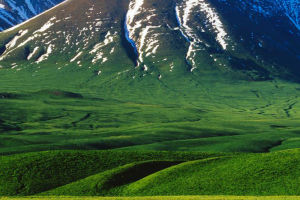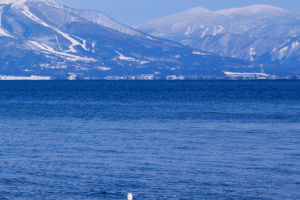Grasslands are globally important because they are a natural Carbon Sink and natural carbon sinks are an important part of a natural process called Carbon Cycle. In the carbon cycle, earth both emits and re-captures and stores large quantities of Carbon Dioxide, also known as CO2, from the earth’s atmosphere thereby keeping the global temperature more or less in balance.
Grasslands have many names;
U.S. Midwest, they’re known as prairies
South America, they’re called pampas
Central Eurasian grasslands are referred to as steppes
Africa they’re named savannas.
What they all have in common is grass as their naturally dominant vegetation. Grasslands are found where there is not enough regular rainfall to support the growth of a forest, but not so little as to form a desert. In fact, most grasslands are located between forests and deserts. About one quarter of the Earth’s land is covered with grasslands, but many of these lands have been turned into farms.
Grasslands also play an important role in ecosystem goods, services, and cultural integrity. Ecosystem goods (such as food) and services (such as water purification) represent the benefits human populations derive, directly or indirectly from ecosystem functions. Grasslands are important for water management, grazing animals, climate mitigation, erosion control, pollination, biological pest control, and even medicines. The health of the biodiversity in grasslands has a heavy influence on ecosystem function; if biodiversity diminishes in these areas, it will negatively impact the goods and services that contribute to human welfare.
These nutrient rich landscapes have been very attractive to humans, providing flat, arable land for agricultural crops, livestock, and urban development. Our impact on these ecosystems has been tremendous and has placed a real strain on native wildlife populations, which are particularly vulnerable to damage and degradation. Native grasses and wildflowers of this ecosystem are not able to compete with introduced pasture grasses, invasive weeds, over-grazing, and forest encroachment. As well, intensive use by livestock, irrigation, and all-terrain vehicles can have negative impacts on soil and its ability to support native species.
Grassland conservation is now more important than ever. We must act to protect what little is left of precious grasslands. All types of natural grasslands, including prairies, savannas, barrens, glades, outcrops, riverscour, balds, bogs, fens, and other herbaceous wetlands, are considered high priority conservation targets.
Preservation—We need to work to preserve our precious few ancient “old- growth” grassland remnants through acquisition and easements.
Restoration—We have the potential to restore grasslands on a large scale by thinning forests in areas that were historically open.
Recreation—We hope to recreate lost ecosystems at a large and meaningful scale by using seed from existing remnants to put nearly extinct grasslands back on the landscape.
Rescue—Grassland-dependent biodiversity is imminently threatened at hundreds of sites; we need the capability to mobilize quickly to salvage and rescue species and communities.
Research—It’s a race against time. Whole grassland systems are disappearing before we’ve had a chance to understand them. Remnants urgently need basic biodiversity research.
Seedbanking—we must plan for the future by ensuring we have the “right seed in the right place at the right time.” Precious remnants are the genetic storehouses of locally adapted seed and source populations of other organisms that will serve as building blocks for restoration.
Education—we can’t protect what we don’t understand. There is a critical need for the development of education and outreach resources with a special focus on engaging a public that is increasingly removed from nature. We need citizen-science, volunteer programs, experiential learning projects, technological tools, publications, videos, documentaries, mobile apps, online materials, and/or curricula that have the potential to enhance public understanding of grasslands.
Market—when economic incentives align with ecological needs, a truly sustainable system can be created.


